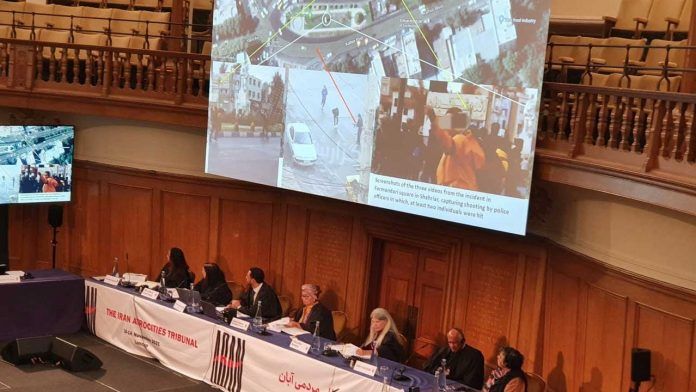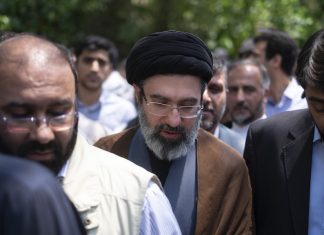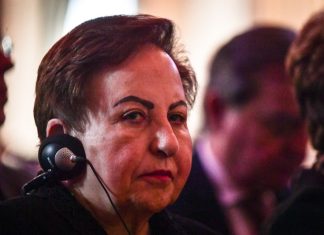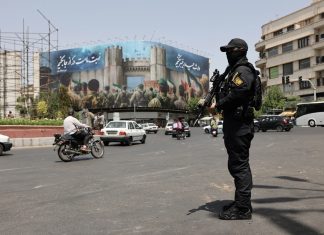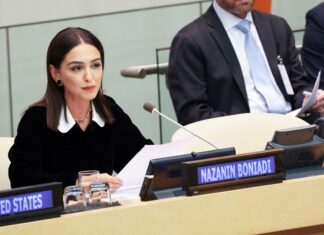By Ahmad Rafat
On Nov. 15, the Aban Tribunal concluded a five-day hearing in London on the alleged direct involvement of several senior officials of the Islamic Republic of Iran in crimes committed during the nationwide protests in November 2019 in Iran.
The tribunal heard testimonies from 34 witnesses and experts. The chief judge, Wayne Jordash, an international lawyer and a former member of the International Criminal Tribunal for the former Yugoslavia (ICTY), said the tribunal may issue its ruling as early as January 2022 in the prosecutors’ case against 133 individuals accused of committing “crimes against humanity.”
Mr. Jordash added that the panel of judges would also review the fresh evidence it had received in recent days. Since the start of the trial, the Aban Tribunal has contacted some 200 additional witnesses who want to testify about the November 2019 events. The prosecutors will evaluate the credibility of these witnesses and their testimonies in the coming days.
The panel of six judges heard from 34 witnesses and seven experts during the five-day trial, who shared their experience and knowledge about the protests in 100 Iranian cities sparked by a massive fuel price hike in November 2019.
IBAHRI calls for #UnitedNations action following opening of people’s tribunal on Iran atrocities. #UNHRC mechanism needed to further investigate the alleged atrocity crimes by Iranian authorities during Nov 2019 crackdown in #Iran. #AbanTribunal pic.twitter.com/ADujXEstaL
— IBAHRI (@IBAHRI) November 13, 2021
Of the initial 40 witnesses expected to testify, one did not appear in court after the Islamic Republic officials allegedly pressured the witness’s family to persuade the person not to testify. The prosecutors could not contact two other witnesses during the trial. Three people did not get to testify because other witness testimonies exceeded the allocated time limit.
Of the 34 who testified at the tribunal, nine were family members of people killed in the November 2019 protests. A family member of one of those arrested and 18 people who had witnessed the protests also testified.
The judges also heard from six witnesses who had credible and detailed information about specific incidents, including a police officer, a member of the security forces, a civilian working for the Islamic Revolutionary Guards Corps (IRGC), and a colleague of Supreme Leader Ayatollah Ali Khamenei’s representative to an Iranian city. The last two people on the list of witnesses were part of the medical staff at two hospitals that had treated some of those injured during the protests.
SPECIAL REPORT- Iran’s Leader Ordered Crackdown on Unrest: “Do Whatever It Takes to End It”
Only nine witnesses chose not to hide their faces when testifying in front of the judges. Others declined to disclose their identities and even electronically distorted their voices to protect themselves and their families. Only the prosecutors and the judges knew the identities of all witnesses. The prosecutors have vigorously examined all witness testimonies during the past year.
Some testimonies have been harrowing, including mothers whose children perished in the protests and several young people who witnessed their friends being gunned down. One young person provided the court with a video clip showing how he was shot in the leg by security police. Another person spoke about being shot in the back, leaving them partially paralyzed for life.
The tribunal heard from Bahar Saba, a human rights researcher, who provided expert testimony on the weapons and munitions used by the police and security forces in the November 2019 protests, which included hunting rifles and live bullets, which are banned by international law from use against protesters.
The police officer who testified at the tribunal said they received an order to shoot the protesters with live ammunition but was arrested and sentenced to five years in prison after refusing to pass on the order to the 60 people in the unit under their command. A member of the security forces told the court about special armed units made up of dangerous criminals whose two-pronged mission included attacking banks and government offices to incite violence and fire live munitions into the crowd of protesters.
A doctor told the court how security forces used ambulances to transport their armed units into the heart of the protests, adding that police arrested many of the injured at the hospital. The doctor and others in the hospital emergency room had treated the injured at their homes to prevent them from being arrested.
Another witness testified about a helicopter opening fire on protesters in the streets of Sadra township, near Shiraz, the capital of the southwestern province of Fars. Another witness said the streets in their hometown had turned into a battle zone between security forces using live ammunition and people defending themselves with rocks and sticks.
Fatemeh Khoshroo, who currently lives outside Iran, spoke about how she was beaten up in the street before being arrested, adding the security police wanted her to confess that Israel’s Institute for Intelligence and Special Operations (Mossad) and the U.S. Central Intelligence Agency (CIA) had paid her to lead the protests.
Ms. Khoshroo testified she was transferred from Khorramabad Prison, in the western province of Lorestan, to Tehran’s Evin Prison, where she was stripped naked and touched by five male interrogators. Khoshroo could not hold back her tears when speaking about her experience two years ago.
“They killed me on that day and in that room,” Khoshroo told the judges.
Hassan Nowrouzi, the deputy chairperson of the Legal and Judicial Committee of the Majlis (Iranian Parliament), recently said: “I was one of those who fired shots at people. We killed, so who wants to prosecute us?”
Commenting on Mr. Nowrouzi’s remarks, Hamid Saba, one of the two prosecutors at the Aban Tribunal, said: “This shows that the Islamic Republic officials believe they are immune from prosecution, something that this tribunal must confront.”

